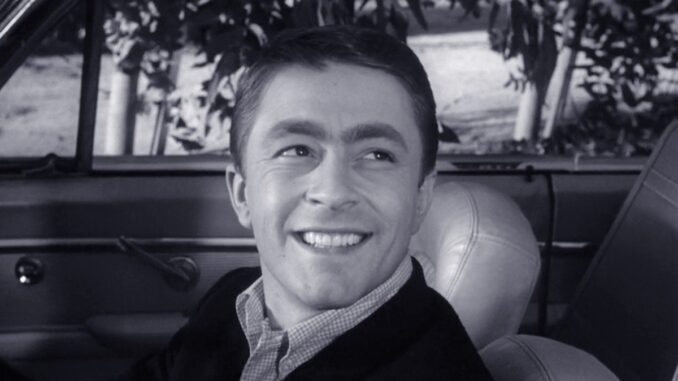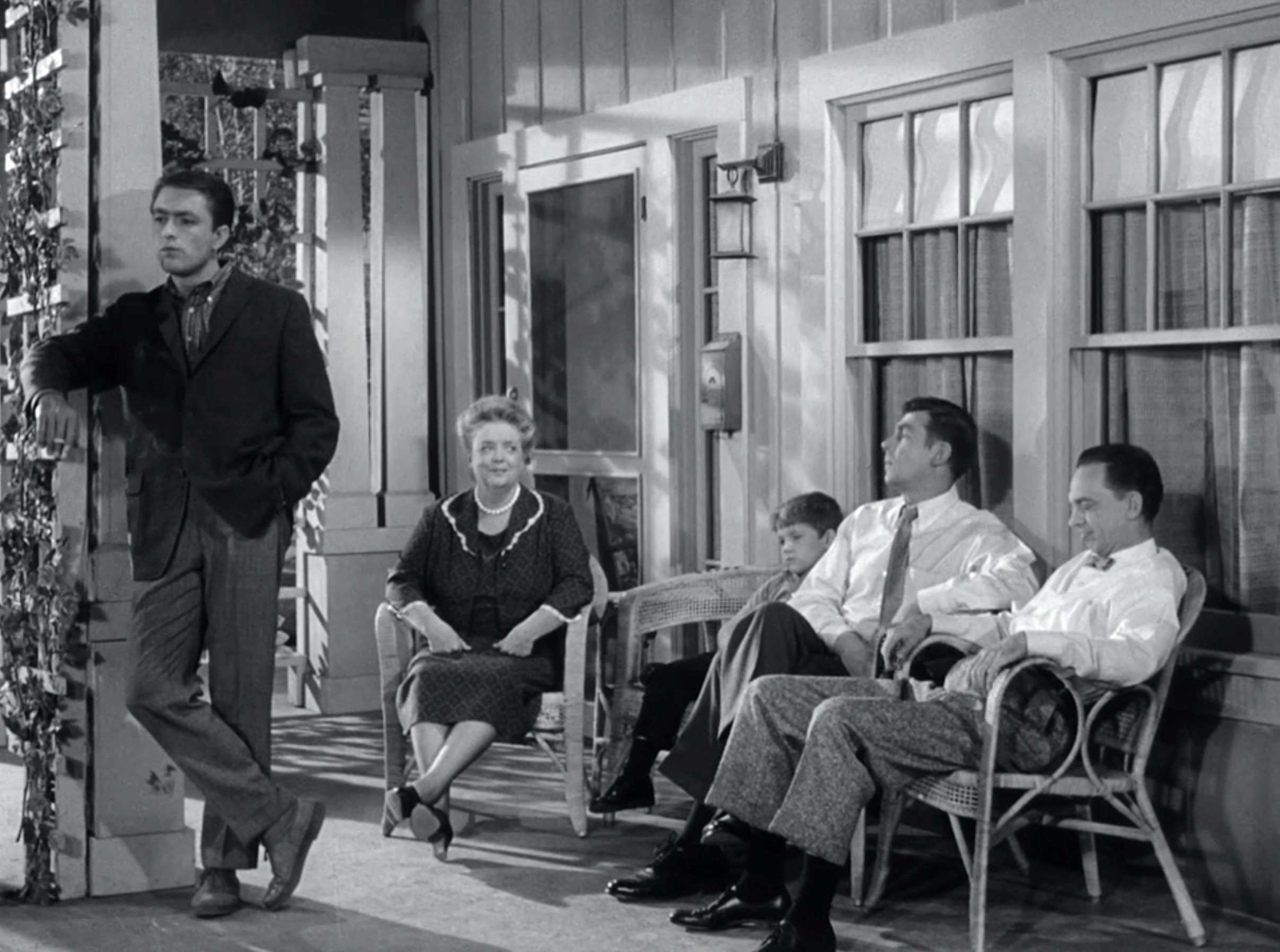
🎬 A Classic Lesson in Morality Disguised as Comedy
Season 2, Episode 15 of The Andy Griffith Show titled “Bailey’s Bad Boy” might seem like another charming black-and-white half-hour from Mayberry. But dig a little deeper, and you’ll find this episode packs a punch in terms of social commentary, character development, and timeless lessons about responsibility, humility, and justice.
📝 Episode Overview: A Spoiled Brat Meets Mayberry’s Backbone
Bailey’s Bad Boy originally aired on January 1, 1962, and it centers on a young man named Ronnie Bailey, a reckless rich kid who winds up in jail after speeding through Mayberry. Unlike typical troublemakers, Ronnie isn’t remorseful—in fact, he finds the whole thing amusing. But Andy Taylor has other plans.
👮 Sheriff Andy’s Unique Approach to Law and Order
A Town Without Locks—but Full of Principles
Sheriff Taylor isn’t your typical badge-wearing authority figure. He doesn’t run a strict, cold jail. In fact, his approach is more about rehabilitation than punishment. Andy’s small-town values and calm demeanor are on full display in this episode.
The Power of Gentle Justice
Instead of throwing the book at Ronnie, Andy lets him experience the slow pace and honest simplicity of Mayberry life. It’s a genius move. Where most would confront Ronnie with anger, Andy leads with calm, which, ironically, makes a bigger impact.
💼 Ronnie Bailey: The Symbol of Entitlement
Privileged, Arrogant, and Oblivious
Ronnie arrives in Mayberry with the kind of smugness you’d expect from someone who’s never faced real consequences. He’s charming, yes—but dangerously confident in his belief that his father’s money and influence will protect him.
When Privilege Crashes into Reality
As Ronnie begins to realize that Andy won’t be bribed or intimidated, his worldview slowly starts to crumble. And that’s when the magic happens.
🧠 The Psychology of ‘Bailey’s Bad Boy’
From Narcissism to Humility
Ronnie starts out thinking Mayberry is a joke—but over the course of the episode, his walls come down. By the end, he admits he’s ashamed of his behavior. The transformation isn’t forced; it feels natural, thanks to how skillfully the writers handle his arc.
Andy as the Moral Mirror
Andy doesn’t preach. He reflects Ronnie’s behavior back to him, allowing Ronnie to judge himself. This passive-yet-powerful form of correction hits harder than any lecture ever could.

💬 Dialogue That’s Still Worth Quoting
One of the most memorable exchanges comes when Ronnie mocks the jail’s lack of locks. Andy simply replies, “We don’t need locks in Mayberry.” It’s a subtle line that reflects a whole philosophy: trust, community, and accountability.
🎭 Acting That Brings the Script to Life
Doug McClure as Ronnie Bailey
Doug McClure’s performance is key here. He nails the entitled attitude but also gives just enough nuance to show that Ronnie is redeemable. His character never becomes cartoonish.
Andy Griffith’s Trademark Warmth
Andy’s performance balances authority and empathy in a way few actors can. You feel like you’re watching someone genuinely trying to make the world better—one misfit at a time.
🔍 Themes That Make This Episode Timeless
Redemption Is Possible
Ronnie’s turnaround proves that people—no matter how lost—can change when treated with dignity.
Small Town, Big Morals
Mayberry might be tiny, but it stands as a moral giant. The show reminds us that integrity doesn’t require complexity—it thrives in simplicity.
🔄 A Pivotal Episode in the Series Arc
Character Growth in 25 Minutes
This episode subtly expands our understanding of Andy’s philosophy. He’s not just enforcing the law—he’s shaping lives.
A Template for Future Episodes
“Bailey’s Bad Boy” sets a blueprint for many future storylines, where outsiders come to Mayberry and leave changed.
🎥 Behind-the-Scenes Fun Facts
-
Doug McClure would later star in The Virginian, but many fans first saw his range in this guest spot.
-
The episode was directed by Bob Sweeney, a frequent collaborator who brought heart and pacing to the show.
-
It remains one of the most re-aired episodes due to its strong message and emotional resolution.
🌟 What Makes This Episode So Memorable?
It’s Funny, But It Hits You in the Heart
Sure, there are chuckles—like Barney’s over-the-top behavior or Otis’s usual antics—but the lasting impact comes from how the show explores character and consequence.
A Morality Play Wrapped in Sitcom Clothing
The episode could easily be mistaken for light entertainment, but it’s essentially a short parable about respect, maturity, and self-worth.
🏆 Critical Reception and Fan Reaction
Even decades later, fans cite this episode as one of the series’ finest. Critics praised the moral lesson and its effective, understated delivery.
On forums and fan pages, you’ll still find people saying things like, “Bailey’s Bad Boy changed how I saw this show,” or “This episode made me cry.”
🎯 Why It Still Matters Today
Relevance in the Age of Instant Gratification
Today’s world rewards fast action and louder voices. “Bailey’s Bad Boy” reminds us that calm guidance and personal accountability still matter—and might even be more effective.
A Masterclass in Soft Power
Andy doesn’t yell, doesn’t threaten, and yet—he transforms a person. That’s soft power at its finest. And it’s something sorely missing in today’s media.
🧩 The Takeaway
“Bailey’s Bad Boy” isn’t just a good episode. It’s a masterclass in storytelling, character development, and quiet moral wisdom. In just over 20 minutes, it challenges the audience, humbles its characters, and lifts its viewers. If you’re only going to watch one episode of The Andy Griffith Show, this might be it.
📌 Conclusion
There’s a reason The Andy Griffith Show still resonates with audiences today, and Season 2, Episode 15: Bailey’s Bad Boy is a shining example of why. In a world cluttered with noise, Andy’s calm voice, honest values, and unwavering belief in personal growth stand out like a lighthouse in the fog. If you’ve ever questioned whether people can change, this episode gives you hope—and maybe even a blueprint for how.
❓ 5 Unique FAQs About “Bailey’s Bad Boy”
1. Who played Ronnie Bailey in “Bailey’s Bad Boy”?
Doug McClure portrayed Ronnie Bailey. He later became known for his role in The Virginian.
2. What was the original air date of this episode?
“Bailey’s Bad Boy” aired on January 1, 1962.
3. Is this episode based on a true story or real event?
No, the storyline is fictional but touches on very real themes of privilege, responsibility, and redemption.
4. Why is this episode so highly regarded by fans?
It balances humor with a powerful moral lesson, showing how people can change when shown empathy and boundaries.
5. Does Ronnie Bailey appear again in the series?
No, Ronnie Bailey is a one-time character. However, the impact he leaves—both on Mayberry and the audience—feels lasting.
